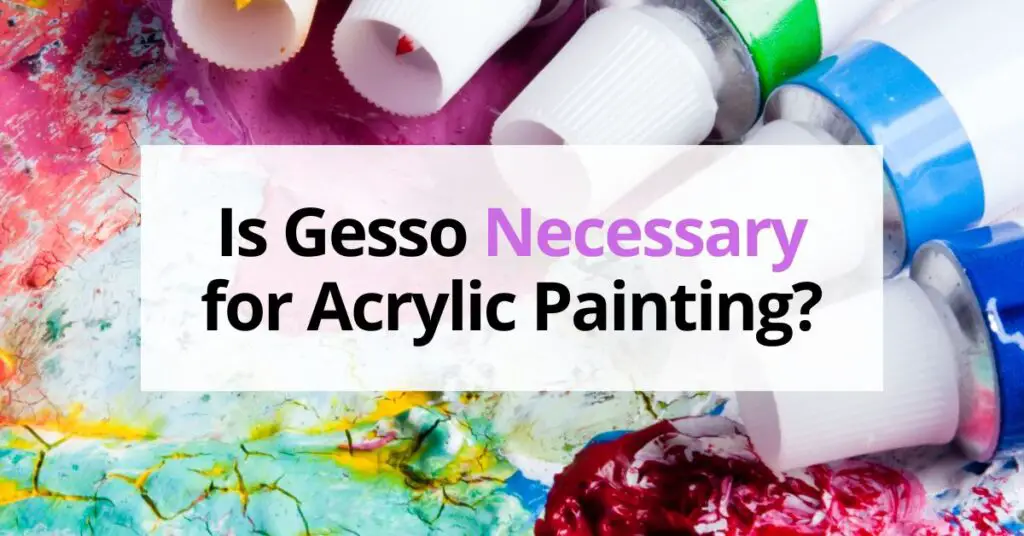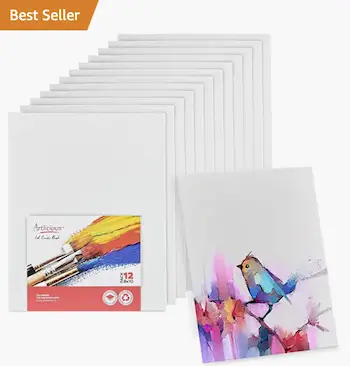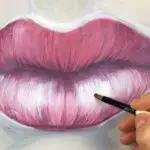Is it totally necessary to use gesso when you’re doing an acrylic painting? Here’s a few pointers to help you figure it out.
You’ve probably heard about gesso from lots of painting instructors, artists, or seen jugs of it staring at your bewildered face at your local Michael’s.
But, unlike it’s acrylic cousins, you just can’t seem to wrap your head around what gesso actually is, how to use it, and whether you can use it with your acrylics (or in place of your acrylics). Which leads you to ask, is using gesso really necessary?
And like all things in art, the answer to that question is yes, it totally is.
In a hurry? ⤵
✅ This is my absolute favorite gesso-solution to use for all my paintings
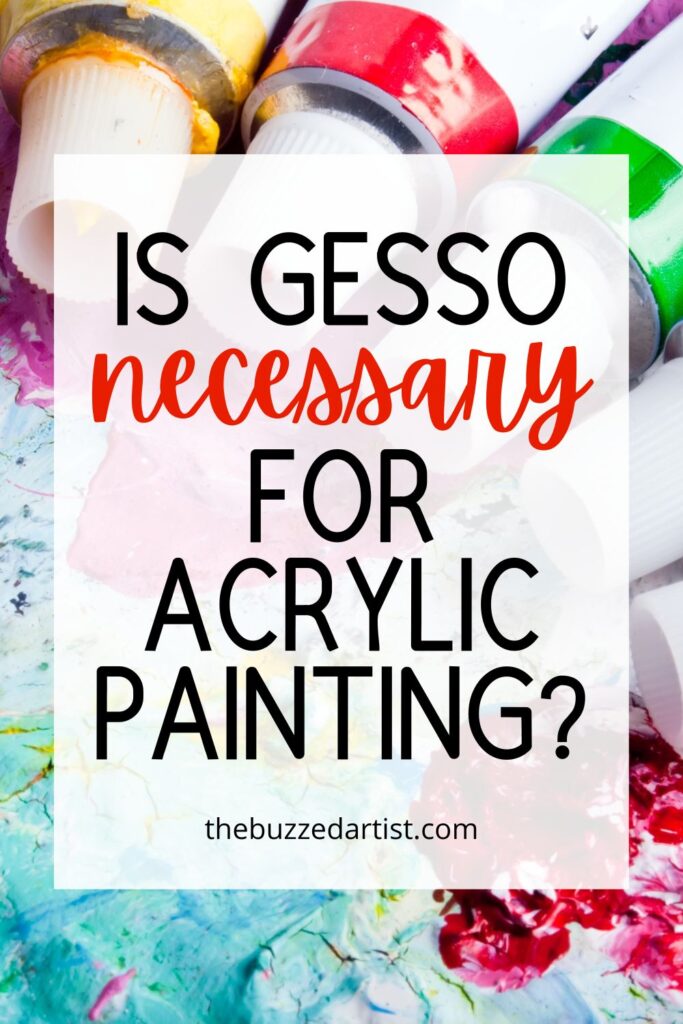
See, whenever you are painting on a surface, like canvas or wood, paint will get completely absorbed, sucking up all the hard-work and hours you just put into the painting. That would totally devastate any motivation to paint -let alone wanting to burn down the canvas and swear off acrylic painting forever. #drama
So you want to use something like gesso to prevent the paint from absorbing through the surface and to help the paint perform at its best. So let’s walk through a few important points about gesso and when (and why) to use it.

Disclaimer: some links used in this post are affiliate links, which means I’ll earn a small commission if you purchase using my links at no extra cost to you. I only recommend products I think will be helpful to you and bring you one step closer to creating beautiful acrylic masterpieces!
What exactly is gesso and why is it important?
Gesso, or in the case of acrylic painting, acrylic gesso is a necessary art supply made from a combination of white pigment and filler (like chalk or silica) and acrylic resin dispersed in water. When applied, gesso acts as a primer to help the surface accept paint and perform at its best – plus, you can add some really nice looking texture to your surface. Once dried, your surface will then be ready to accept paint.
Typically, acrylic gesso is white in appearance -thanks to the addition of the whitening agent, titanium dioxide used in the mix and comes packaged in convenient containers so you don’t have to spend the time making your own (unless you like that sort of thing, my little DIY queen).
When should I use gesso?
Basically, anytime you are dealing with an unprimed surface, you absolutely need gesso.
And a simple way to figure this out is looking at your available art supplies first.
As an acrylic artist, you’re most likely working on a stretched canvas or canvas panel. Depending on the brand and make, most canvas already come pre-gessoed (aka primed and ready to play) – simply check the packaging.
If you don’t have the original packaging and are not quite sure, it’s probably best to bite the bullet and prime your canvas with some gesso.
If you’re dealing with other surfaces like cloth or wood, they’ll definitely need a good primer smacking with gesso.
What acrylic gesso do you like to use?
✅ When I need gesso, I typically like using Liquitex Gesso since it is much more fluid in consistency, allowing me to create a smoother texture on my canvas. Plus, it’s a pretty highly rated product used by lots of painters of all skill levels.
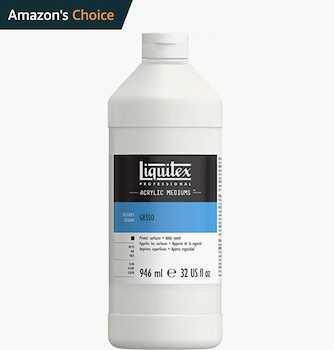
How to use gesso on canvas
Using gesso on canvas is pretty straight forward. Simply take a large flat brush, dip into your gesso, evenly coating the brush bristles on both sides. Then go to your canvas surface and apply an even coat of gesso. I usually like to pick one consistent brush direction per layer – either horizontal or vertical strokes – to help keep even coverage and texture.
How many layers of gesso should I use?
Although this can be up to your preference, a typical recommendation is a minimum of 2 layers of gesso, with sanding in between layers.
I like to use anywhere between 120-220 grit sandpaper or sand block for sanding down between gesso layers to help keep my surface even and level.
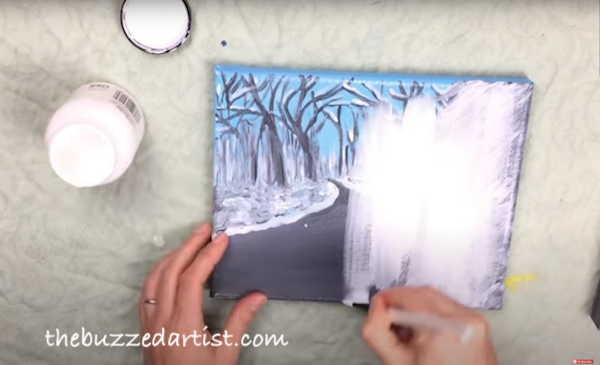
If you are using gesso to reprime/reuse an old canvas (like I did here), you’ll want to use 2-3 layers or more depending on how covered up the previous painting is.

Can you draw on top of gesso?
Absolutely. Once gesso dries, it forms a harder surface that readily accepts mediums like pencil, charcoal, and of course- acrylic paint. In fact, I have done many drawing projects on top of dried gessoed surfaces in many of my paintings.
Does gesso come in other colors besides white?
Before you have a panic attack about every painting surface having that god-awful shade of white primer added to them, gesso does in fact come in two other colors: black (which replaces the titanium dioxide whitening agent with carbon black) and a clear version.
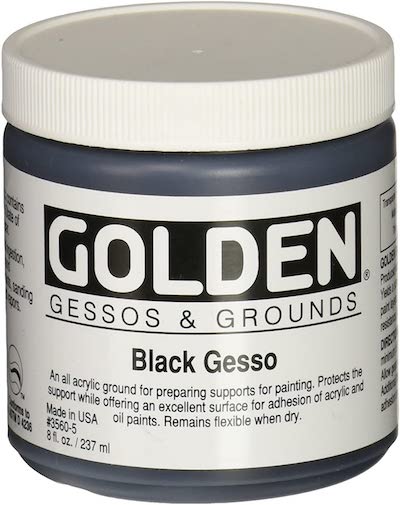
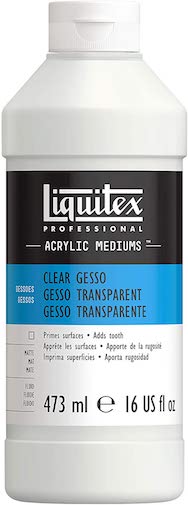
But what if you want a different color gesso altogether? Can I mix gesso with acrylic paint? The answer to that is a resounding YES!
All you gotta do is take your white gesso and mix it with any acrylic paint color you want to give it a different color altogether. Easy peasy. No more nightmare-inducing blank expanses of white!
What can I use if I don’t have gesso?
But for the majority of my canvas paintings, I opt for the pre-gessoed canvases – mainly because I’m lazy and would rather have that done for me. This means I can get paint slapping right as I remove the canvas from it’s packaging- no additional priming or steps necessary.
✅ This canvas set from Artlicious has a variety of canvas options AND you don’t have to prime them because they already come pre-gessoed and ready to paint. Plus, they are a BEST-SELLER with lots of raving fans that love using these for paintings.
Can I use Acrylics instead of Gesso?
If you are in a bind and desperately need a quick solution, using acrylic paint without priming the surface can work, but it’s not really recommended – especially since you’ll need way more paint to compensate for the surface slurping up all the pigment. Which means more time and money wasted to buy more expensive acrylic paint tubes as opposed to the less expensive gesso.
In addition, you can also use commercial acrylic primer or even make gesso at home with a few key ingredients.
There are tons of videos with gesso recipes, and here are just a few I dug up that look promising:
DIY GESSO RECIPE #1
DIY GESSO RECIPE #2
How long does it take gesso to dry?
Applying a layer of gesso usually will take 10-20 minutes of dry time before the surface is ready to be used. If you want to speed up the drying process, apply a heat gun or blow dryer to the surface.
Where can I buy gesso?
Gesso is commercially available at local art supply stores like Michaels or (my favorite) online like Amazon, Michaels.com, and dickblick.com, just to name a few.

Can you use gesso with paper?
If you are opting to paint with acrylic canvas paper (my favorite being this one), gesso is a great way to strengthen the paper weight and prevent it from that pesky buckling and waviness that can ruin your painting fun.
In a previous post, I talked about the various types of acrylic paper and which ones you should use for your acrylic paintings, and a big discovery is that the less expensive, lighter canvas paper (like the ones pictured below) would greatly benefit from the stiffening benefits of gesso.
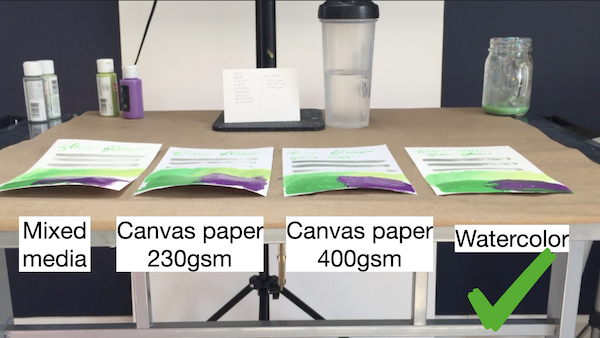
Read more: Figure out which acrylic paper is best for you
Are gesso and Mod Podge the same?
Nope. While gesso is used as a primer before painting, mod podge is a decoupage medium that acts as a glue, sealant, and finish. You won’t be able to paint on top of mod podge without running into issues.
In the opposite way, gesso is made in such a way that provides an absorbent coating to the surface, allowing paint to grab onto the surface easily and not get lost.
Can you use gesso instead of white paint?
If you keep running out of white paint and want to instead grab that bottle of gesso instead to make your clouds, you absolutely can do so, with caution.
See, while gesso does in fact contain titanium white in it, it won’t necessarily have the same holding power as titanium white acrylic paint – aka, if you are creating a museum/gallery/commission painting and want the colors to last you hundreds of years, painting with gesso in lieu of acrylics won’t stand the test of time and will fade.
In this video, Gisele Grenier provides a great detailed explanation on this topic and is totally worth a watch:
However, if you are in the beginning stages of learning and are strapped for cash, using gesso in lieu of the more expensive white acrylic paint can work.
I just wouldn’t sell the painting to anyone looking for a timeless piece.
What is the difference between gesso and primer?
No difference at all. Gesso is in fact a primer.
Concluding thoughts on Needing Gesso when Painting with Acrylics
So, when it comes to painting with acrylics, gesso is a must.
It helps prime your canvas and keep your colors brighter; plus, you use up less paint in the long-run. And there are many types of options for applying gesso, from applying it yourself onto the raw canvas prior to painting or simply buying a pre-gessoed canvas that allows you to skip the self application process altogether.
The possibilities are endless.
Related Posts
- How to repair any canvas
- Is varnishing really necessary with acrylic painting?
- How to thin out thick acrylic paint
